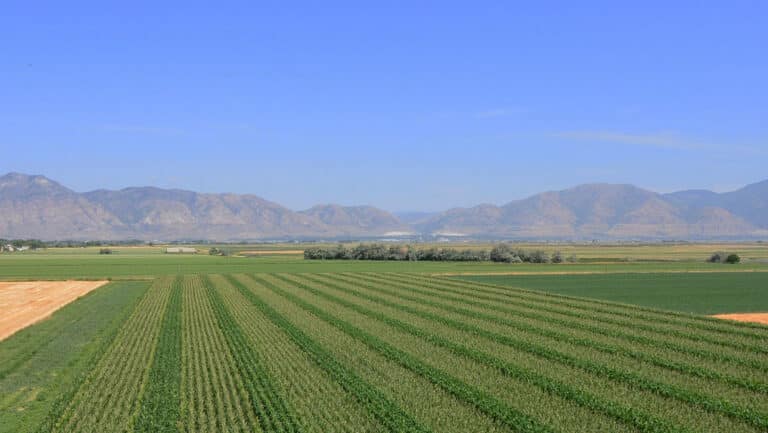Hay You! Storage Considerations for the Farmer from the Nation’s Premier Land Lender
Hay is a vital component of most farms and ranches, so it’s well worth it to spend some time on storage considerations. By leaving your hay exposed to the elements you will incur a loss of resources and capital. Studies have shown that hay loss rates can be as high as 50 percent in certain conditions. The best place to store hay is in a barn—especially in areas with snowy winters— but building a structure just to store hay is not always an option. There are other options though:
Consider these “best practices” if you store hay outdoors, all backed by testing and experience:
- Ensure bale tightness. Tightly baled hay repels water much better than loosely baled hay.
- Get into formation. Grouping bales tightly together in a line increases protection from precipitation and the shedding of water. Space lines or rows roughly three feet apart to encourage air flow.
- Pick the best location. Your hay storage site should be as high and dry as possible and located away from trees and hedgerows. Full sunlight and good air flow are important for drying out wet hay.
- Utilize coverage. In a best-case scenario, hay bales should be both covered and on platforms of some sort. A University of Tennessee study showed that uncovered hay bales stored directly on the ground lost 37 percent of their hay from June to January. Those that were stored in the barn lost a mere 6 percent. Additionally, hay bales stored either up on tires without a cover or on the ground and covered both lost 29 percent. However, hay bales that were both stored up on tires and covered only lost 8 percent of their hay. The study shows that a few simple tires and tarps can offer coverage that’s almost comparable to a barn.
We’re always searching for ways to put money back in ag operators’ pockets. If you’re looking for an agricultural lender who cares about your bottom line, consider AgAmerica Lending’s unique loan products. We are pleased to offer low interest rates, long amortizations, and an industry-unique 10-year line of credit.






